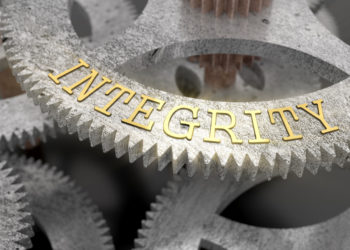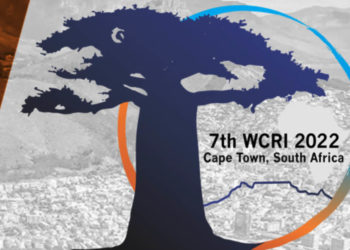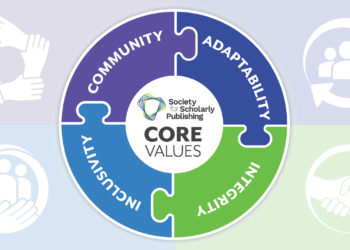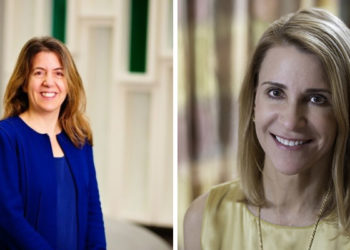Last week, STM Solutions launched a prototype of the STM Integrity Hub during an online webinar. The STM Integrity Hub is a collaboration space where publishers can jointly solve issues in the area of research integrity. It will offer a shared infrastructure for screening tools to do checks on, for example, simultaneous submissions, traces of material from suspicious sources such as paper mills, image alterations, and so forth.
In today’s Scholarly Kitchen post, I interview Joris van Rossum, Product Director of the STM Integrity Hub, and Hylke Koers, CIO of STM Solutions, to learn more about the project, its goals, and how it might develop. STM Solutions is the operational arm of STM (International Association of Scientific, Technical and Medical Publishers). I highly recommend watching the recording of the kick-off webinar for presentations by Nicola Nugent (Royal Society of Chemistry), Catriona Fennel (Elsevier), and Adam Day (Sage) that detail publisher-specific efforts that have helped inform the Hub development as well.
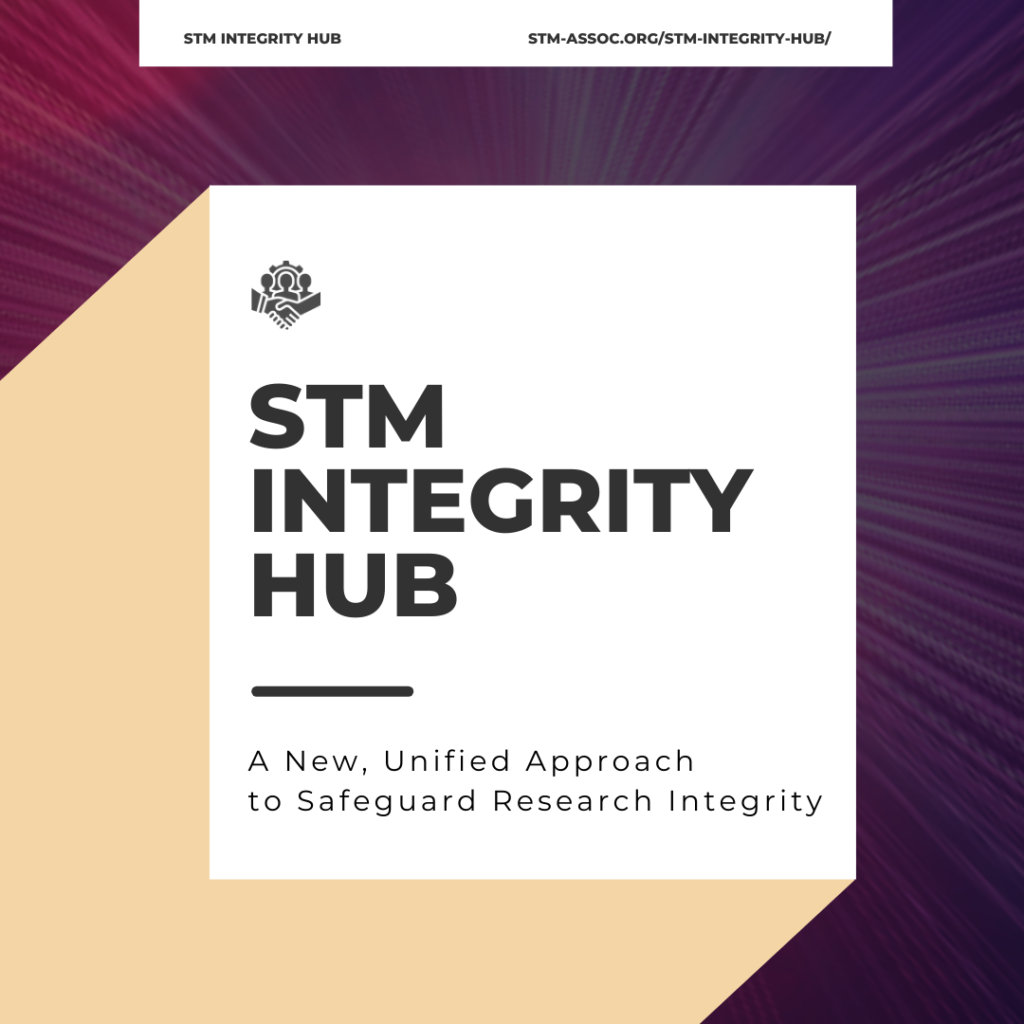
What is the Integrity Hub and why is it needed?
Joris: Recent years have unfortunately seen a significant increase in research integrity issues. Many are the result of fraudulent organizations looking to profit, think paper mills, while others derive from unwitting submission errors that likewise pose a threat to the integrity of the collective scholarly record. Paper mills are fraudulent organizations that produce counterfeit manuscripts which are submitted to academic journals. Increasingly advanced technologies are used in the process to fabricate, plagiarize, and manipulate text, images, and research data. This is placing a large burden on publishers, editors, and reviewers and undermines trust in scholarly publications. STM and many of its members, are deeply concerned about these dynamics. We believe that reliable, state-of-the-art technology solutions can play an important role in addressing these challenges, not by automatic screening or triaging, but by detecting possible cases of misconduct and flagging that in support of the editorial decision-making process.
The mission of the Hub is to equip the scholarly communication community with data, intelligence, and technology to protect research integrity. We aim to do that in three ways. First, by fostering the sharing of intelligence and knowledge. For example, sharing experiences that publishers have in identifying papers that are produced by paper mills. Second, by building policies and frameworks. Everything we do in terms of safeguarding research integrity has to be firmly embedded in legal and policy frameworks, where we work closely with editorial and legal teams, as well as with organizations like COPE. And, last but not least, by building a platform that allows publishers to provide content to detect patterns across publishers in a safe and confidential way, but also to easily integrate 3rd party screening tools in their workflows that focus on specific forms of misconduct, e.g. image manipulation.
You launched a “demonstrator” last week. Can you tell us a bit more about this?
Joris: Pooling content across different journals and publishers will be a prime factor for success if we want to tackle integrity issues. For example, detecting simultaneous submissions where the publishers involved expect or require exclusive submissions — a problem burdening peer reviewers and editors but also often an indication of paper mills — can only work if a system can look across simultaneous submissions to multiple journals and publishers. But pooling content is also crucial for building comprehensive reference and training sets, for example of unduly manipulated material. In the current demonstrator phase, we have developed a flexible and adaptive infrastructure that does exactly that — in a safe and secure way that also respects the confidentiality of manuscripts under review. It allows publishers to share (part of) manuscripts in an environment where selected tools can access this information in a way that results of these screenings are sent back to the affected publisher in question so that these signals can inform the editorial decision-making process. We have demonstrated two concrete implementations — one to detect simultaneous submissions, and one to detect resubmitted retracted paper mill material. Both implementations can of course be expanded to other use cases.
Who has been involved in developing the Hub and how does it relate to other activities within STM, e.g., the work of the Standards and Technology Executive Committee (STEC)?
Hylke: The hub is developed by STM Solutions, the operational arm of STM that was established in 2021 to develop and enable the running of services and infrastructure for STM members and the wider scholarly communications community, creating synergies where appropriate or necessary.
The Integrity Hub builds on earlier work carried out by Working Groups in STM’s STEC group, in particular the Working Groups on Simultaneous Submissions and on Image Alteration and Duplication. These Working Groups continue to exist, and are now directly feeding into the development roadmap of the Integrity Hub. In this way, we are making sure that the Hub offers practical solutions to some of the challenges that these Working Groups have come up against, such as a safe and secure way to look for common patterns in content emanating from different publishers. This connection between the work done within STEC and STM Solutions also illustrates the rationale behind STM Solutions, namely to add operational clout and the ability to bring great ideas and concepts to life.
In addition to all the organizations that were already engaged on these topics via the STEC working groups, we have seen a lot of interest from STM members and other organizations to contribute their ideas and expertise. At this point, there are over 20 organizations contributing to the Integrity Hub in some shape or form!
STM members that are collaborating in this project are also commercial competitors. How are you managing these dynamics, both with respect to fostering collaboration but also with respect to issues related to inappropriate disclosure of proprietary or confidential information?
Joris: Very good question. These issues are of course extremely important, and we, like all the work we do at STM and STM Solutions, do our best to ensure STM are fully compliant with all rules and regulations and the participating members will do the same. For this purpose the STM Integrity Hub launched a legal task force, with the aim of removing legal barriers for publishers to participate in the Integrity Hub while at the same time having adequate legal provisions in place. Concerning competition among publishers: the Hub is designed to be a platform that may be available to all publishing organizations purely voluntarily. Research integrity is a good example of an area where collaboration between publishers increases value for each participant and for society at large. Research Integrity issues face the community as whole, and it is in no one’s interest if any publisher is targeted by fraudulent behavior or integrity issues because that will erode trust in the wider ecosystem. The fact that 20 publishers — of all shapes, sorts and sizes — are actively participating in the hub speaks volumes. Participation can take place on various levels; some publishers are actively participating in the Integrity Hub through participation in one of the Working Groups which tackle one specific use case (we currently have working groups looking at simultaneous submissions, image manipulation and paper mills); others by contributing to one of the task forces (which deal with overarching issues such as communication, cybersecurity, and legal aspects). And, finally, the Integrity Hub has a governance board consisting of 10 senior representatives of publishing organizations. The entire mission of the Hub is to ensure a diverse but safe environment so that competition can continue to take place on a level playing field of quality, legality, ethics and integrity.
How will the Integrity Hub be funded?
Hylke: We’ll be working out a financial sustainability model in the course of this year. It’s a bit early to speculate, but we’d anticipate to recover at least part of the operational costs by an integration fee — where of course the fee will be subject to a number of criteria to ensure widest possible adoption
The Collaboration Hub is just getting started but I am confident you developed it with specific goals and targets in mind. How will you be monitoring the project and what metrics are you tracking in order to assess its success?
Joris: 2022 is the year of building the Hub, and in this phase we measure success mostly by the level of participating publishers, the use cases we address in the Hub, integration with submissions systems and the engagement with 3rd-party tool providers. The operational phase of the Hub, planned to start next year, aims to see results on its main objectives: getting better in uncovering integrity issues at the moment of submission, (and, thereby, reducing the number of potentially required retractions due to integrity issues), and eventually reducing the influx of articles with integrity issues. Analyzing things like the nature of rejects (number and reasons of rejects, and involvement of the hub) will allow us to measure this. Uptake among publishers and editors is of course also an important factor in measuring success of this initiative.
How can publishers learn more about the Collaboration Hub and get involved with the project going forward?
Joris: More information about the Hub can be found on our webpage. As mentioned, already 20 publishers are actively involved but we welcome many in addition. Please contact Joris at joris@stm-solutions.org to learn more.
Discussion
2 Thoughts on "The New STM Integrity Hub"
What a marvelous initiative. Congratulations! I have been striving for some time to make myself heard (I am an independent consultant for Research Integrity in Brazil)…
I am encouraged to read of the initiative and leadership STM is demonstrating with its Integrity Hub. First steps even when modest are, after all, important as they are necessary to advance further. Although I am hopeful as this effort evolves we will see meaningful and sustainable improvements, I would have expected a more robust and supportive response from the community in this forum.
